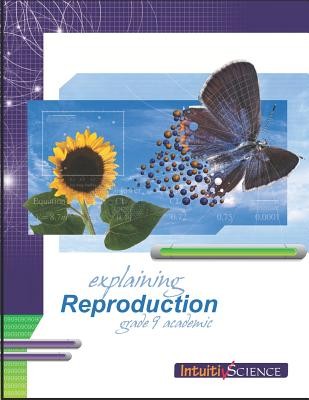
- We will send in 10–14 business days.
- Author: Jim Ross
- Publisher: Ross Lattner Educational Consultants
- Year: 2004
- Pages: 96
- ISBN-10: 1897007027
- ISBN-13: 9781897007020
- Format: 21.6 x 28 x 0.5 cm, minkšti viršeliai
- Language: English
- SAVE -10% with code: EXTRA
Reviews
Description
Let's do more than just memorize stuff !
Once again, IntuitivScience represents introductory cell biology in a highly pictorial manner. Using very simple, easy-to-reproduce diagrams, students can quickly accomplish a solid understanding of the "how-and-why" of cellular reproduction.
In this book, we explore how multicellular organisms grow, repair tissue, and pass on hereditary material. The emphasis is on the genetic information and its faithful and complete transmission between generations. We construct a simple model of the structure and role of DNA, how it is translated into protein, and how it is combined in sexual reproduction.
Parents and teachers, you get one half of the book! We provide solid pedagogical supports, recipes, and methods of presentation. Every two-page Student Exercise in this book is supported by a two-page Parent-Teacher Guide, to help you teach your child about cellular reproduction.
The unit itself is subdivided into four major sections. Each section will take a little more than one week to complete.
- Structure and function of the plant and animal cell. Basic use of the microscope to observe the plant and animal cells. This might be review for many students.
- The observable features of cellular reproduction, which are divided into two distinct phases. The first phase is cell reproduction, which involves the whole life cycle of one cell. The second observable phase is nuclear reproduction, which is widely known as mitosis.
- Reproduction at the molecular level. What's going on down there during mitosis and meiosis? What can go wrong?
- Laboratory activities in which students examine some forms of reproduction.
At the end of each section is a thorough quiz.
Your student will learn how multi-cellular organisms grow, repair tissue, and pass on hereditary material by forms of cell division and differentiation, with an emphasis on the genetic information and its faithful and complete transmission between generations. We explore the structure and role of DNA, how the cell "reads" DNA to make proteins, and how DNA damage can result in errors in those proteins. You may also investigate how people can manipulate DNA, and the societal effects of this technology.
EXTRA 10 % discount with code: EXTRA
The promotion ends in 22d.16:49:55
The discount code is valid when purchasing from 10 €. Discounts do not stack.
- Author: Jim Ross
- Publisher: Ross Lattner Educational Consultants
- Year: 2004
- Pages: 96
- ISBN-10: 1897007027
- ISBN-13: 9781897007020
- Format: 21.6 x 28 x 0.5 cm, minkšti viršeliai
- Language: English English
Let's do more than just memorize stuff !
Once again, IntuitivScience represents introductory cell biology in a highly pictorial manner. Using very simple, easy-to-reproduce diagrams, students can quickly accomplish a solid understanding of the "how-and-why" of cellular reproduction.
In this book, we explore how multicellular organisms grow, repair tissue, and pass on hereditary material. The emphasis is on the genetic information and its faithful and complete transmission between generations. We construct a simple model of the structure and role of DNA, how it is translated into protein, and how it is combined in sexual reproduction.
Parents and teachers, you get one half of the book! We provide solid pedagogical supports, recipes, and methods of presentation. Every two-page Student Exercise in this book is supported by a two-page Parent-Teacher Guide, to help you teach your child about cellular reproduction.
The unit itself is subdivided into four major sections. Each section will take a little more than one week to complete.
- Structure and function of the plant and animal cell. Basic use of the microscope to observe the plant and animal cells. This might be review for many students.
- The observable features of cellular reproduction, which are divided into two distinct phases. The first phase is cell reproduction, which involves the whole life cycle of one cell. The second observable phase is nuclear reproduction, which is widely known as mitosis.
- Reproduction at the molecular level. What's going on down there during mitosis and meiosis? What can go wrong?
- Laboratory activities in which students examine some forms of reproduction.
At the end of each section is a thorough quiz.
Your student will learn how multi-cellular organisms grow, repair tissue, and pass on hereditary material by forms of cell division and differentiation, with an emphasis on the genetic information and its faithful and complete transmission between generations. We explore the structure and role of DNA, how the cell "reads" DNA to make proteins, and how DNA damage can result in errors in those proteins. You may also investigate how people can manipulate DNA, and the societal effects of this technology.


Reviews